| Product Name | SOD Activity Kit (Discontinued) |
| Description |
Quantitative colorimetric measurement of superoxide dismutase activity |
| Species Reactivity | Species Independent |
| Platform | Microplate |
| Sample Types | Cell lysates, EDTA Plasma, Erythrocytes, Heparin Plasma, Serum, Tissue, Whole Blood |
| Detection Method | Colorimetric Assay |
| Assay Type | Direct Enzyme Activity Assay |
| Utility | Colorimetric assay used to quantitatively measure SOD activity in a variety of samples. |
| Sensitivity | 0.044 U/ml |
| Assay Range | 0.0625 - 4 U/ml |
| Precision | Intra Assay Precision: Three samples diluted in Assay Buffer were run in replicates of 20 in an assay. The mean and precision of the calculated concentrations were: Sample 1- 0.407 U/mL, 4.6% CV Sample 2- 0.726 U/mL, 7.3% CV Sample 3- 1.203 U/mL, 16.8% CV Inter Assay Precision: Three samples diluted in Assay Buffer were run in duplicates in sixteen assays run over multiple days by four operators. The mean and precision of the calculated concentrations were: Sample 1- 0.356 U/mL, 10.5% CV Sample 2- 0.653 U/mL, 6.1% CV Sample 3- 1.277 U/mL, 13.8% CV |
| Number of Samples | 89 samples in duplicate |
| Other Resources | Kit Booklet , MSDS |
| Field of Use | Not for use in humans. Not for use in diagnostics or therapeutics. For in vitro research use only. |
Properties
| Storage Temperature | 4ºC | ||||||||||||||||||||||||
| Shipping Temperature | Blue Ice | ||||||||||||||||||||||||
| Product Type | Activity Kits | ||||||||||||||||||||||||
| Assay Overview | The Superoxide Dismutase (SOD) Activity Kit is designed to quantitatively measure SOD activity in a variety of samples. The assay measures all types of SOD activity, including Cu/Zn, Mn, and FeSOD types. A bovine erythrocyte SOD standard is provided to generate a standard curve for the assay and all samples should be read off of the standard curve. Samples are diluted in our specially colored Sample Diluent and added to the wells. The Substrate is added followed by Xanthine Oxidase Reagent and incubated at room temperature for 20 minutes. The Xanthine Oxidase generates superoxide in the presence of oxygen, which converts a colorless substrate in the Detection Reagent into a yellow colored product. The colored product is read at 450 nm. Increasing levels of SOD in the samples causes a decrease in superoxide concentration and a reduction in yellow product. The activity of the SOD in the sample is calculated after making a suitable correction for any dilution, using software available with most plate readers. The results are expressed in terms of units of SOD activity per mL. | ||||||||||||||||||||||||
| Kit Overview |
|
||||||||||||||||||||||||
| Cite This Product | SOD Activity Kit (StressMarq Biosciences Inc., Victoria BC CANADA, Catalog # SKT-214) |
Biological Description
| Alternative Names | Cu/ZnSOD Activity Kit, SOD1 Activity Kit, MnSOD Activity Kit, SOD2 Activity Kit, EC-SOD Activity Kit, SOD3 Activity Kit |
| Research Areas | Alzheimer's Disease, Atherosclerosis, Cancer, Cardiovascular System, Neurodegeneration, Neuroscience, Oxidative Stress, Parkinson's Disease |
| Scientific Background | Short-lived and highly reactive oxygen species (ROS) such as O2·- (superoxide), ·OH (hydroxyl radical), and H2O2 (hydrogen peroxide) are continuously generated in vivo. In the resting state, the balance between antioxidants and oxidants is sufficient to prevent the disruption of normal physiologic functions; however, either increases in oxidants or decreases in antioxidants can disrupt this balance giving rise to elevated levels of reactive oxygen species (ROS) (1,2).The cellular levels of ROS are controlled by antioxidant enzymes and small molecule antioxidants. The major antioxidant enzymes, superoxide dismutases (SODs), including copper-zinc superoxide dismutase (Cu/ZnSOD, SOD1), manganese superoxide dismutase (MnSOD, SOD2) and extracellular superoxide dismutase (EC-SOD, SOD3), all play critical roles in scavenging O2·-. Decreased SOD activity results in elevated level of superoxide which in turn leads to decreased NO but increased peroxynitrite concentrations. The major intracellular SOD is a 32-kD copper and zinc containing homodimer (Cu/Zn SOD). The mitochondrial SOD (MnSOD) is a manganese-containing 93-kD homotetramer that is synthesized in the cytoplasm and translocated to the inner matrix of mitochondria. EC-SOD is the primary extracellular SOD enzyme and is highly expressed in many organs. Increased SOD activity levels are seen in Downs Syndrome (3) while decreased activity is seen in diabetes, Alzheimer’s disease, rheumatoid arthritis, Parkinson’s disease, uremic anemia, atherosclerosis, some cancers, and thyroid dysfunction (3-8). |
| References |
1. Liocher, SI and Fridovich, I. Free Rad. Biol. Med., 2007, 42:1465-1469. 2. Imlay, JA. Ann Rev. Bichem., 2008, 77:755-776. 3. Torsdottir, G. et al. J.Neurol.Sci. 2010. 299(1-2):51-54. 4. Giacco, F & Brownlee, M. Circ.Res. 2010. 107(9):1058-1070. 5. Bae, S-C, et al. J.Amer.Coll.Nutr. 2003. 22(4):311-315. 6. Akbostanci, MC, et al. Acta Neurol.Belg. 2001. 101:180-183. 7. Shainkin-Kestenbaum, R, et al. Nephron. 1990. 55(3):251-253. 8. Saito, T. Hokkaido Igaku Zasshi. 1987. 62(2):257-268. |
Product Images
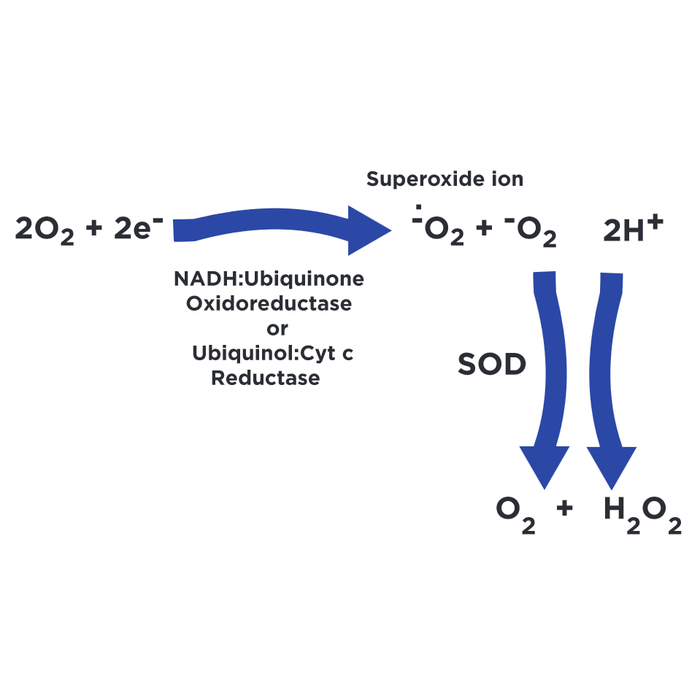
Short-lived and highly reactive oxygen species (ROS) such as O2·-(superoxide), ·OH (hydroxyl radical), and H2O2 (hydrogen peroxide) are continuously generated in vivo. The cellular levels of ROS are controlled by antioxidant enzymes and small molecule antioxidants. The major antioxidant enzymes, superoxide dismutases (SODs), including copper-zinc superoxide dismutase (Cu/ZnSOD, SOD1), manganese superoxide dismutase (MnSOD, SOD2) and extracellular superoxide dismutase (EC-SOD, SOD3), all play critical roles in scavenging O2·-.

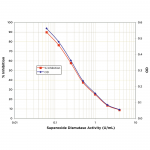
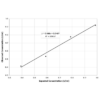

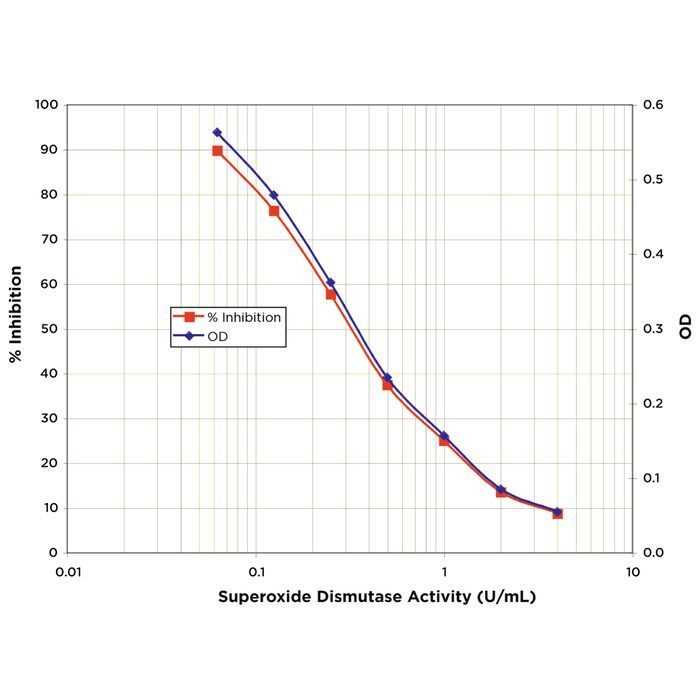
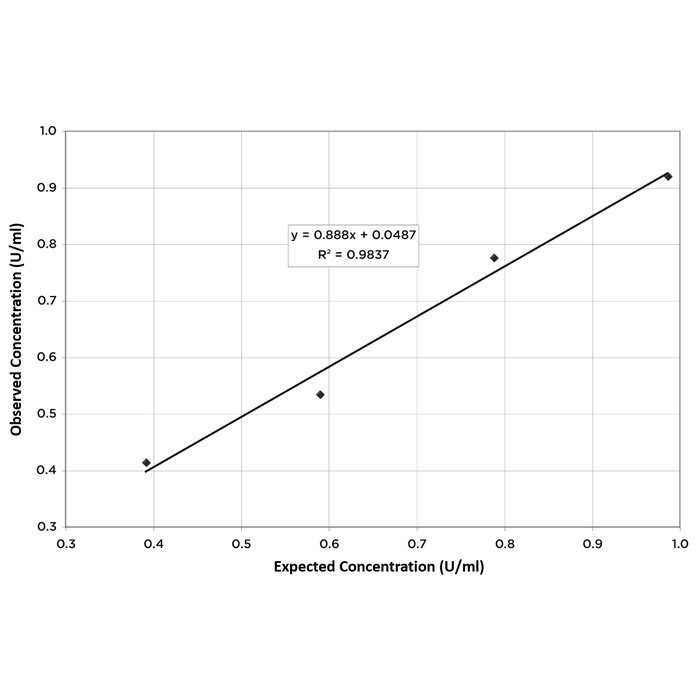
StressMarq Biosciences :
Based on validation through cited publications.